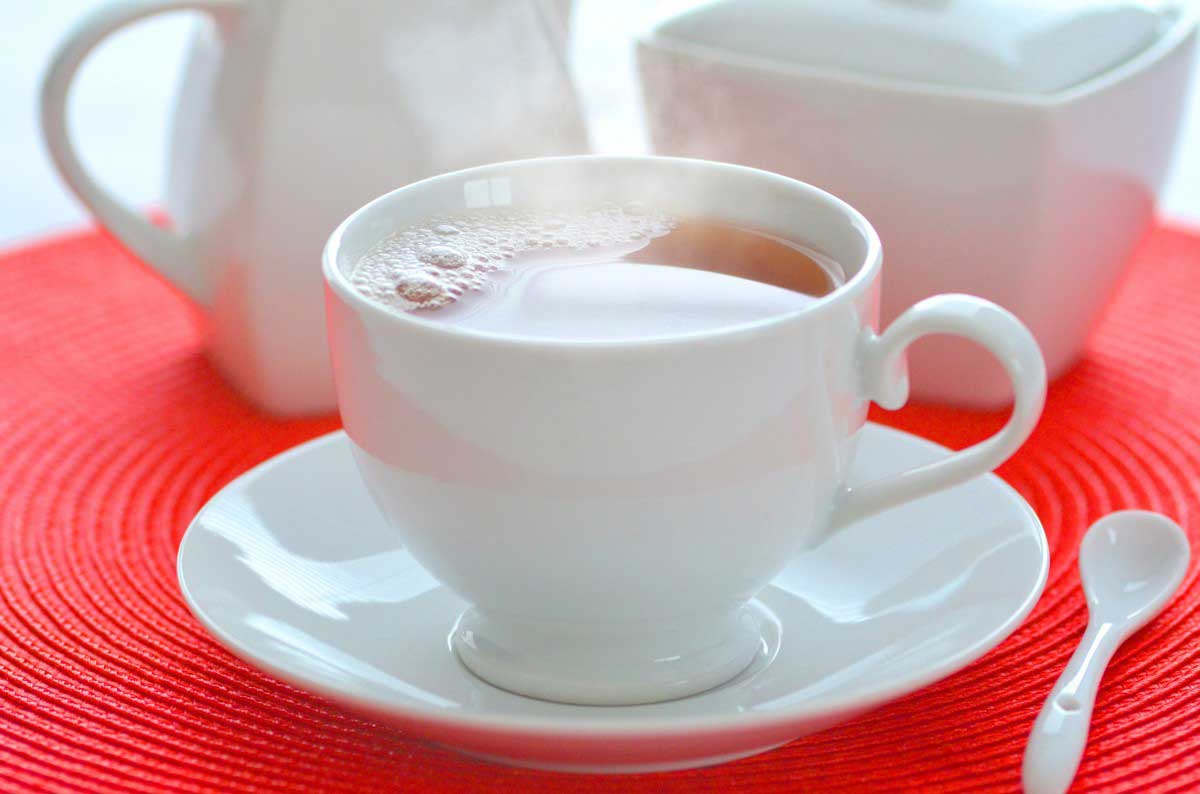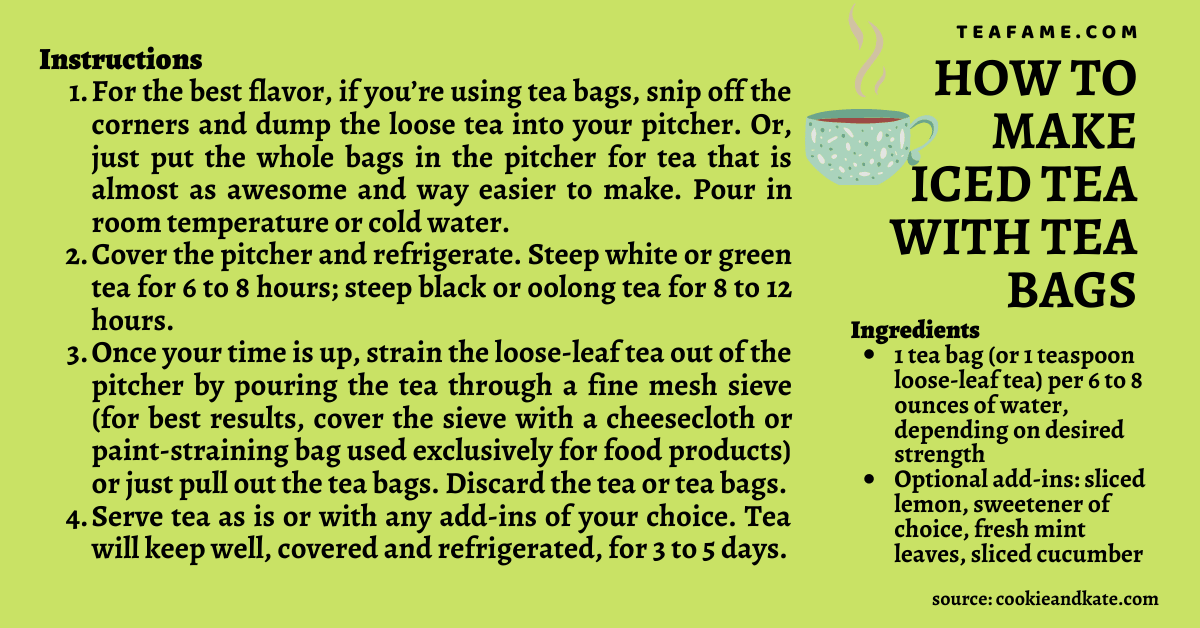Traditional tea ceremonies around the world, the gentle clinking of porcelain cups, the fragrant steam swirling upwards carrying the delicate aroma of tea leaves. A sense of calm pervades the air as meticulous preparations unfold – carefully chosen utensils arranged with purpose, each movement imbued with quiet reverence. This is not merely a cup of tea; it’s a cultural tapestry woven from tradition, a ceremony steeped in history and symbolism.
This article embarks on a captivating exploration of diverse tea ceremonies practiced around the world. We’ll delve into the fascinating history and cultural context that gave rise to these rituals, peeling back the layers of symbolism embedded within each step. Prepare to be transported across continents, from the serene teahouses of Japan to the vibrant markets of Morocco, as we discover the unique ways various cultures celebrate this cherished beverage.
Our journey will unfold like the delicate leaves unfurl in hot water. First, we’ll explore the history and global spread of tea, tracing its path from its Asian origins to its prominent place on tables worldwide. Then, we’ll delve into the very concept of tea ceremonies, understanding their cultural significance and the values they embody. Buckle up as we embark on a whirlwind tour of specific tea ceremonies practiced in various regions, including China, the birthplace of tea, Japan, where the art of tea is a refined expression, Morocco, where mint tea is a cornerstone of hospitality, and India, where chai is a warm embrace in a cup.
As we travel, we’ll compare and contrast these rituals, discovering both the unique elements that define each culture and the common threads that bind them together. Finally, we’ll explore how tea ceremonies have evolved in the modern world, adapting to changing times while preserving their timeless essence. The article concludes with valuable resources for those who wish to delve deeper into the world of global tea traditions.
So, dear reader, are you ready to embark on this aromatic adventure? Join us as we sip from the cup of cultural understanding, savoring the rich flavors and traditions that make tea ceremonies a truly global phenomenon.
A Global Infusion: The History and Spread of Tea
Tea, a seemingly simple beverage, boasts a rich and fascinating history, intricately woven into the fabric of cultures around the world. Imagine, the delicate leaves we steep for a calming cuppa have embarked on a remarkable journey, from ancient medicinal elixirs to beloved cultural icons. Let’s delve into the captivating story of tea, exploring its origins, its spread across the globe, and the unique significance it holds in different societies.
From Ancient Origins: A Serendipitous Discovery
The story of tea begins in China, shrouded in the mists of legend. One popular tale credits the legendary Emperor Shennong, the “Divine Farmer,” with discovering tea’s properties around 2737 BC. While the exact details may be lost to time, historical evidence suggests tea consumption in China as early as the 10th century BC. Initially revered for its medicinal properties, tea leaves were used to treat a variety of ailments. Over time, tea transitioned from a medicinal drink to a cherished beverage, enjoyed by nobility and commoners alike.
From Leaves to Luxury: By the Tang Dynasty (618-907 AD), tea cultivation and consumption had flourished in China. Elaborate tea ceremonies emerged, and tea became a symbol of sophistication and refinement. Tea houses became popular social hubs, where people gathered to enjoy tea, conversation, and cultural pursuits.
Silk Road to Steaming Cups: A Journey Across Continents
The aroma of tea leaves wasn’t confined to China’s borders for long. The Silk Road, a network of trade routes that snaked across Asia, Europe, and Africa, played a pivotal role in spreading tea’s popularity. Caravans laden with precious tea leaves journeyed westward, introducing new cultures to this invigorating beverage.
-
Aromatic Adventures in Asia: Tea’s journey along the Silk Road introduced it to neighboring Asian countries like Japan and Korea. In Japan, tea ceremonies evolved into intricate rituals emphasizing mindfulness and beauty. In Korea, tea became a staple beverage, enjoyed by people from all walks of life.
-
A Warm Welcome in the West: By the 16th century, tea had reached Europe, where it was initially seen as a luxury good. European royalty and nobility embraced tea, enjoying its unique flavor and perceived health benefits. Over time, tea consumption trickled down to the middle class and eventually became a widespread beverage.
A Catalyst for Cultural Exchange: The spread of tea wasn’t merely about introducing a new drink; it was a catalyst for cultural exchange. Tea houses became meeting points for people from diverse backgrounds, fostering trade, diplomacy, and the sharing of ideas. The rituals and customs surrounding tea consumption also adapted and evolved as they traveled across continents, reflecting the unique cultural identities of different societies.
A Global Beverage: A Cup Steeped in Tradition
Today, tea is a global beverage, enjoyed by billions of people around the world. While its origins lie in China, tea production and consumption have flourished in other regions, each developing their own unique traditions and customs.
-
India: The Land of Chai: India boasts a vibrant tea culture, with a particular fondness for chai, a spiced milk tea. Chai is more than just a beverage; it’s a social experience, often enjoyed with friends and family.
-
Africa: A Growing Passion: Tea cultivation and consumption are on the rise in Africa, with countries like Kenya and Rwanda becoming major producers. African tea cultures are still evolving, but tea is becoming increasingly popular as a refreshing and invigorating beverage.
Beyond the Sip: The Essence of Tea Ceremonies
Tea ceremonies are more than just a way to enjoy a delicious cup of tea. They are elaborate cultural rituals steeped in tradition, symbolism, and social significance. Imagine a gathering focused on the meticulous preparation, elegant presentation, and mindful consumption of tea. Every step, from the careful selection of tea leaves to the specific gestures used while pouring, holds meaning and purpose. Let’s embark on a journey to explore the essence of tea ceremonies around the world, delving into their core values and how they reflect the rich tapestry of human cultures.
A Ritual Unfolded: The Art of Tea, Meticulously Prepared
At the heart of every tea ceremony lies a meticulously crafted ritual. Each step, from the selection of tea leaves to the final sip, is imbued with purpose and tradition. The host, often referred to as a tea master, meticulously prepares the tea using specialized tools and techniques that have been passed down through generations. The specific methods and implements used can vary greatly depending on the culture, but the underlying essence remains the same – a dedication to detail and a reverence for the act of preparing the perfect cup.
A Feast for the Senses: The preparation process itself can be a captivating performance. The gentle sounds of whisking, the soft hiss of water heating, and the delicate aroma of tea leaves filling the air all contribute to a multi-sensory experience. The visual beauty of the tea set, often featuring exquisite chinaware and meticulously arranged utensils, adds another layer of appreciation to the ritual.
Beyond the Practical: While the steps involved in preparing tea ensure a delicious and flavorful brew, they also hold deeper meaning. The measured movements and deliberate actions can be seen as a form of meditation, promoting focus and mindfulness in the present moment. The act of carefully selecting and preparing the tea demonstrates respect for the guest and the significance of the occasion.
Mindfulness and Hospitality: Cultivating Presence and Connection
Tea ceremonies transcend the act of simply drinking tea. They are deeply rooted in core values that resonate across cultures. Here are some of the essential themes that weave through the fabric of these rituals:
-
Mindfulness: The slow and deliberate nature of tea ceremonies encourages participants to be present in the moment. The act of focusing on the preparation, the visual beauty of the tea set, and the subtle flavors of the tea itself creates a space for quiet contemplation and appreciation. In our fast-paced world, tea ceremonies offer a precious opportunity to disconnect from distractions and reconnect with ourselves and the company we share.
-
Appreciation for Simplicity: Tea ceremonies often involve a minimalist aesthetic. The focus is on the natural beauty of the tea leaves, the elegant simplicity of the teaware, and the shared experience itself. This simplicity serves as a reminder to find joy in the everyday and appreciate the beauty in the little things.
-
Hospitality: At their core, tea ceremonies are acts of hospitality. The host prepares and presents the tea with care and attention, offering it to guests as a gesture of respect and generosity. The shared experience of enjoying tea together fosters a sense of connection and community, creating a space for meaningful conversation and the strengthening of social bonds.
Cultural Significance: A Reflection of Traditions and Beliefs
Tea ceremonies offer a fascinating window into the soul of a culture. The specific rituals, etiquette, and even the type of tea used can all reflect the unique values, traditions, and even religious beliefs of a particular region. Here are a few examples:
-
Japan: The Japanese tea ceremony, known as Chanoyu or The Way of Tea, is a highly formalized ritual steeped in Zen Buddhist principles. Every movement and gesture is imbued with symbolism, reflecting a philosophy of harmony, respect, and mindfulness.
-
China: The Chinese tea ceremony has a long and rich history, dating back thousands of years. It is seen as a way to cultivate inner peace and well-being, often incorporating elements of traditional Chinese medicine and philosophy. The specific teas used and the brewing methods can vary depending on the region and occasion.
-
Morocco: Moroccan mint tea ceremonies are a vibrant and social affair. The sweet mint tea is prepared and served with elaborate gestures, often accompanied by traditional Moroccan pastries. These ceremonies are a way to welcome guests, celebrate special occasions, and strengthen social bonds within the community.
As you delve deeper into the world of tea ceremonies, you’ll discover a kaleidoscope of traditions, each with its own unique story to tell. These rituals offer a glimpse into the hearts and minds of different cultures, fostering a sense of appreciation for the rich tapestry of human experience. So, the next time you sip a cup of tea, take a moment to savor not just the flavor, but also the cultural significance and the timeless traditions that lie behind this simple yet profound act.

A Journey Through Steaming Cups: Exploring Specific Tea Ceremonies
Tea is more than just a beverage; it’s a cultural thread woven into the fabric of societies around the world. Throughout history, elaborate rituals and customs have emerged around the art of tea preparation and consumption, each reflecting the unique cultural values and traditions of its origin. Let’s embark on a delightful journey as we explore some of the most fascinating tea ceremonies from across the globe, each offering a glimpse into a different way of life.
The Way of Tea: The Japanese Tea Ceremony (Chanoyu)
Imagine a serene setting, a meticulously designed tea room with natural light filtering through paper windows. In this tranquil space unfolds the Japanese tea ceremony, also known as Chanoyu. This elaborate ritual is more than just preparing and drinking tea; it’s a holistic experience steeped in Zen Buddhist principles. Every movement, from the whisking of the matcha to the arrangement of the tea utensils, is imbued with purpose and precision.
A Ceremony of Tranquility: The host meticulously prepares each element of the ceremony, ensuring a sense of harmony and mindfulness. Guests enter the tea room in a specific order, cleansing their hands and mouths before kneeling on tatami mats. The host, dressed in traditional attire, then whisks matcha, a finely powdered green tea, into a frothy beverage. Each sip is savored slowly, with appreciation for the tea’s delicate flavor and the beauty of the surroundings.
Beyond the Ritual: The Japanese tea ceremony transcends the act of drinking tea. It’s a practice in mindfulness, focusing on the present moment and appreciating the simple beauty of everyday things. The ceremony fosters a sense of peace and tranquility, a welcome respite from the fast-paced world outside.
Gongfu Cha: The Art of Tea in China
China, the birthplace of tea, boasts a rich tradition of tea ceremonies. Among these, Gongfu Cha, literally translated as “skillful brewing,” stands out for its meticulous approach and emphasis on appreciating the subtle nuances of tea.
A Celebration of Quality: The Gongfu Cha ceremony revolves around loose-leaf tea, typically oolongs or pu-erhs, known for their complex flavor profiles. Small clay teapots and multiple infusions are central to the ritual. The host carefully measures the tea leaves, using hot water at precise temperatures for each subsequent infusion. Each infusion reveals a new layer of flavor in the tea, a testament to the importance of high-quality leaves and skilled brewing techniques.
A Shared Experience: The Gongfu Cha ceremony is often enjoyed in a small group setting, fostering a sense of community and shared appreciation for tea. As the host meticulously brews and pours each infusion, guests observe, discuss the tea’s aroma and flavor, and savor each sip. The ceremony is a social experience, a time for conversation, connection, and a deeper appreciation for the art of tea.
Moroccan Mint Tea Ceremony: A Warm Welcome
Step into a vibrant Moroccan marketplace, filled with the aroma of spices and the sounds of bustling activity. Here, amidst the energy, you might be offered a steaming glass of mint tea, a symbol of Moroccan hospitality. The Moroccan mint tea ceremony is a welcoming ritual, a way to connect with friends, family, and even strangers.
A Sweet and Aromatic Tradition: Moroccan mint tea is typically brewed with green tea leaves, fresh mint sprigs, and sugar. The tea is prepared in ornate metal teapots, often intricately engraved with beautiful designs. The host pours the tea from a height, creating a frothy layer that adds to the visual and sensory experience. The resulting beverage is a delightful balance of sweetness, mint’s refreshing aroma, and the subtle earthiness of green tea.
More Than Just a Drink: Offering and accepting mint tea is a sign of respect and warm hospitality in Moroccan culture. The ceremony is often a prelude to conversation, a way to break the ice and create a sense of connection. Whether enjoyed at home with family or offered to a guest at a shop, Moroccan mint tea is a symbol of welcome and a delicious way to connect with others.
A Tapestry of Traditions: Comparing and Contrasting Rituals
Tea ceremonies around the world are like exquisite tapestries, woven with threads of tradition, symbolism, and cultural significance. While the specific steps and practices may vary, a closer look reveals a fascinating interplay of similarities and differences across these global rituals. Let’s embark on a journey to explore the captivating world of tea ceremonies, appreciating both the common threads that bind them and the unique expressions that set them apart.
Similarities and Differences: A Dance of Steps and Utensils
Across continents and cultures, tea ceremonies share some common elements, creating a sense of shared appreciation for the humble tea leaf. Here’s a glimpse into these intriguing parallels:
-
The Power of the Leaf: While the specific tea type may vary, tea is undeniably the star of the show. In China, green teas are often the preferred choice, while Japan reveres the delicate elegance of matcha. Black tea takes center stage in many Indian tea ceremonies, while fragrant herbal infusions might grace a Moroccan tea table. Despite these variations, tea remains the unifying element, a symbol of hospitality and shared experience.
-
The Art of Brewing: The brewing methods employed in different tea ceremonies showcase both artistry and practicality. China’s gongfu brewing technique involves multiple infusions from small clay pots, allowing for a gradual appreciation of the tea’s flavor profile. Japan’s whisking of matcha into a frothy beverage creates a visually stunning and texturally unique experience. From the use of long-necked kettles in Morocco to the intricate strainers employed in British afternoon tea, each ceremony reflects a cultural approach to brewing perfection.
-
Aesthetics in Every Aspect: Tea ceremonies are not just about the drink itself; they are a multi-sensory experience. Elegantly designed teaware plays a significant role, with delicate porcelain cups in Japan contrasting with the vibrant metal teapots used in Morocco. The meticulous arrangement of tea utensils, the careful folding of napkins, and the incorporation of incense all contribute to creating an atmosphere of tranquility and respect.
The Role of Hospitality: A Cup of Connection
While the methods and tea types may differ, a common thread runs through all tea ceremonies – the spirit of hospitality. Offering a cup of tea is a time-honored way to welcome guests, express appreciation, and foster social connection.
-
A Warm Welcome: Imagine the comforting aroma of freshly brewed tea as you enter a traditional Chinese tea house. The host, with a gentle smile, invites you to partake in a tea ceremony. This simple act of offering tea signifies warmth, acceptance, and a willingness to share a moment of peace and conversation.
-
Building Bridges: In Japan, the tea ceremony, known as the Way of Tea, is not just about drinking tea; it’s a structured ritual steeped in respect and mindfulness. The host meticulously prepares the tea, each step imbued with symbolism. Guests partake in the ceremony with quiet reverence, fostering a sense of connection and shared experience that transcends language or cultural barriers.
-
Strengthening Bonds: Whether it’s sharing a cup of masala chai with friends in India or enjoying a pot of Moroccan mint tea with family, tea ceremonies offer a dedicated space for fostering relationships. The act of preparing and serving tea, the focused attention on the present moment, and the act of conversation all contribute to strengthening bonds and creating cherished memories.
Cultural Specificity: A Reflection of Heritage
While the core purpose of tea ceremonies might be universal, the specific customs and practices reflect the unique cultural tapestry of each region. Let’s explore a few examples:
-
The Serene Tranquility of Japan: The Japanese tea ceremony, characterized by meticulous preparation, precise movements, and an emphasis on mindfulness, reflects the Japanese values of harmony, respect, and simplicity. The tea room itself is a haven of tranquility, designed to evoke a sense of peace and focus.
-
The Vibrant Energy of Morocco: Moroccan mint tea ceremonies are a lively affair, often accompanied by music and conversation. The sweet mint tea, poured from a height to create a frothy layer, is a symbol of Moroccan hospitality. The ceremony is a social gathering, a time for families and friends to connect and share stories.
-
The Rich Tapestry of China: Chinese tea ceremonies can range from formal gatherings to casual social interactions. The gongfu brewing technique, with its emphasis on multiple infusions and appreciating the subtle nuances of the tea, reflects the Chinese appreciation for tradition and slow living.
A Living Tradition: The Evolution of Tea Ceremonies Today
Tea ceremonies, steeped in history and cultural significance, continue to evolve alongside the modern world. While the core principles of mindfulness, respect, and shared enjoyment remain constant, adaptations are being made to ensure these traditions stay relevant and accessible in the 21st century.
Modern Adaptations: Tea Traditions for Busy Lives
Imagine this: you come home after a long day, yearning for a moment of peace and connection. Instead of reaching for your phone, you take a deep breath, set aside some quiet time, and embark on a personal tea ceremony. This is the beauty of modern tea ceremony adaptations – they acknowledge the fast pace of our lives and offer shorter, more accessible formats that can be easily incorporated into our daily routines.
-
Shorter Ceremonies: Traditional tea ceremonies can be quite elaborate and time-consuming. Modern adaptations often take a more streamlined approach, focusing on the core elements of the ceremony while keeping it concise. This allows busy individuals to still experience the benefits of a tea ceremony without a significant time commitment.
-
Casual Settings: Gone are the days when tea ceremonies were solely confined to dedicated tea rooms or elaborate gardens. Today, tea ceremonies can be enjoyed in the comfort of your own home, a cozy nook in a coffee shop, or even a quiet park bench. The focus is on creating a space that fosters mindfulness and appreciation for the present moment, not on adhering to strict guidelines or specific settings.
-
Personalization is Key: Modern tea ceremonies encourage personalization. Feel free to choose teas you enjoy, experiment with different brewing methods, and create a ceremony that reflects your own preferences and cultural background. The key is to find a practice that brings you a sense of peace and allows you to connect with the present moment.
Enduring Significance: A Celebration of Culture and Connection
Despite these modern adaptations, the core significance of tea ceremonies remains unchanged. They continue to be powerful tools for:
-
Cultural Understanding: Tea ceremonies offer a window into different cultures and traditions. Participating in a tea ceremony, whether in your own country or while traveling abroad, allows you to gain a deeper appreciation for the customs and values of another culture.
-
Mindfulness Practice: The act of preparing tea, focusing on the steeping process, and savoring each sip can be a powerful mindfulness practice. It allows you to disconnect from the constant buzz of technology and reconnect with yourself, promoting a sense of calm and presence.
-
Shared Enjoyment: At their heart, tea ceremonies are about shared experiences. Whether you’re enjoying a cup of tea with a close friend, family member, or even a casual acquaintance, the ceremony fosters a sense of connection and allows you to create lasting memories.
In a world that often feels hurried and disconnected, tea ceremonies offer a precious opportunity to slow down, appreciate the simple pleasures in life, and connect with ourselves and others.
Accessibility and Innovation: Expanding the Circle
The beauty of tea ceremonies in the modern world lies in their growing accessibility. Here are some exciting developments:
-
Tea Ceremony Workshops: Many cultural centers and tea houses now offer workshops and classes that introduce people to the world of tea ceremonies. These workshops provide a safe and informative space to learn about different tea traditions, practice brewing techniques, and experience a tea ceremony firsthand.
-
Global Exploration: The internet and travel opportunities have made it easier than ever to explore tea ceremonies from around the world. Documentaries, online resources, and even virtual tea ceremony experiences allow people to learn about and appreciate these traditions from the comfort of their homes.
As tea ceremonies evolve and adapt to the modern world, they continue to serve as a bridge between cultures, promoting understanding, mindfulness, and a shared appreciation for the simple act of enjoying a cup of tea. So, why not steep yourself in this rich tradition? You might just discover a new source of peace, connection, and cultural exploration.
Beyond This Cup: Unveiling the World of Tea Ceremonies
Our exploration of global tea ceremonies has hopefully painted a vibrant picture of the rich cultural tapestry woven around this simple beverage. But the journey doesn’t end here! If you’re curious to delve deeper into these fascinating traditions, here are some resources to fuel your exploration:
Immerse Yourself in the Experience: Travel and Cultural Centers
For the truly adventurous soul, there’s nothing quite like experiencing a tea ceremony firsthand. Imagine yourself transported to a serene tea room in Japan, participating in a traditional chado (the Way of Tea) ceremony. Witness the meticulous movements of the tea master, the delicate whisking of matcha, and the reverence with which each sip is savored. This is an experience that transcends a simple cup of tea – it’s a cultural immersion that stays with you long after the final sip. Business – Money Making – Marketing – E-commerce
-
Museums and Cultural Centers: Many museums and cultural centers around the world host tea ceremony demonstrations or workshops. These events offer a glimpse into the traditions and symbolism behind the ceremony, often accompanied by informative talks or presentations. Research local museums or cultural centers in your area to see if they offer any tea ceremony programs.
-
Travel Destinations: For the ultimate tea ceremony experience, consider incorporating it into your travel plans. Japan, China, and Morocco are all renowned for their unique tea traditions. Many travel agencies offer tours that include tea ceremony experiences, allowing you to participate in the ritual within its cultural context.
A Word on Respect: If you have the opportunity to participate in a tea ceremony, remember to approach it with respect and an open mind. Dress modestly, be mindful of etiquette, and be prepared to ask questions in a respectful manner. The goal is to learn and appreciate the cultural significance of the ceremony.
Explore Virtually: Documentaries and Online Resources
Perhaps traveling the world isn’t currently on your agenda. Fear not, intrepid explorer! The beauty of the internet lies in its ability to bring the world to you. Several documentaries and online resources offer virtual journeys into the world of tea ceremonies.
-
Documentaries: A quick search online will reveal a wealth of documentaries dedicated to tea culture and ceremonies around the world. These documentaries often showcase the history, rituals, and significance of these traditions, providing a captivating introduction from the comfort of your couch.
-
Online Resources: Numerous websites and online publications delve into the world of tea ceremonies. These resources may include detailed articles, instructional videos, or even virtual tours of famous tea gardens or tea ceremony rooms. Explore these resources to gain a deeper understanding of the various tea traditions practiced across the globe.
Learn Locally: Tea Shops and Specialty Stores
Believe it or not, you may not have to travel far to experience a taste of tea ceremony traditions. Many tea shops and specialty stores dedicated to tea culture often host tea ceremony demonstrations or workshops. These events provide a wonderful opportunity to learn about specific tea traditions, observe the rituals firsthand, and even participate in a simplified ceremony.
- Tea Shops and Specialty Stores: Do a quick web search for tea shops or specialty tea stores in your area. Many such establishments go beyond simply selling tea – they also host educational events and workshops. Contact your local tea shop to see if they offer any tea ceremony demonstrations or workshops that you can attend. Tea, Coffee, Energy Drinks, Juice, Beverage, Smoothie, and more
Beyond the Experience: Attending a tea ceremony demonstration or workshop can be a valuable learning experience. These events often provide the opportunity to ask questions, sample different teas, and gain insights into the cultural significance of the ceremony. You might even be inspired to recreate a simplified tea ceremony at home, sharing the experience with loved ones.
As you embark on your exploration of global tea ceremonies, remember that tea is more than just a beverage. It’s a symbol of hospitality, mindfulness, and cultural heritage. With each cup, we connect to traditions that have been passed down for generations, fostering a sense of peace and appreciation for the simple pleasures in life. So, steep yourself in the rich world of tea ceremonies, and discover the beauty that lies in a cup shared with respect and appreciation.
Other Interesting Articles
- 20 Proven Health Benefits of Drinking Tea Before A Meal
- How Drinking Tea Can Boost Your Smoking Cessation Journey
- 21 Proven Health Benefits of Drinking A Cup of Tea At Night
- 19 Proven Health Benefits of Drinking Green Tea Before Bed
- 21 Proven Health Benefits of Drinking Tea Before A Meal
- 22 Proven Health Benefits of Drinking Milk Everyday for Men
- 20 Health Benefits of Drinking Milk Everyday for Weight Loss
- Irish Breakfast Tea vs English Breakfast Tea: Which is Better?
- Darjeeling Tea vs Green Tea: Comparison and Differences
- 18 Health Benefits of Drinking Milk Everyday for Weight Gain
- 21 Benefits of Drinking Milk Everyday for Skin and Hair
- 25 French Lavender Earl Grey Tea Health Benefits, Side Effects
- 18 Nilgiri Tea Health Benefits, How to Make, Side Effects
- 20 Proven Health Benefits of Drinking Milk in the Morning
- 18 Coco Loco Black Tea Health Benefits, Recipe, Side Effects
- 20 Yunnan Tea Health Benefits, How to Make, Side Effects
- 21 Lychee Black Tea Health Benefits, Recipe, Side Effects
- 20 Assam Breakfast Tea Health Benefits, Recipe, Side Effects
- 21 Earl Grey Blue Flower Tea Health Benefits, Side Effects
- 20 Health Benefits of Drinking Tea While Stressed & Anxious



